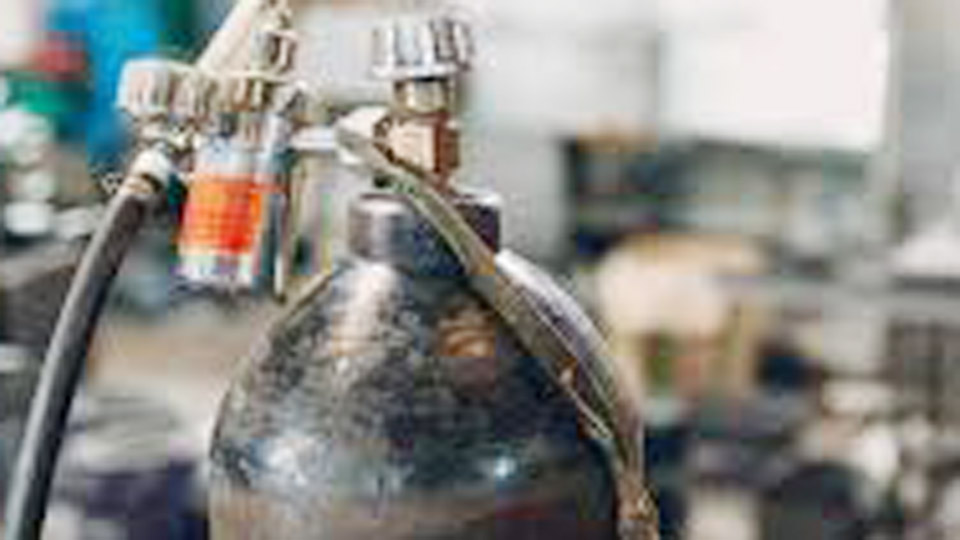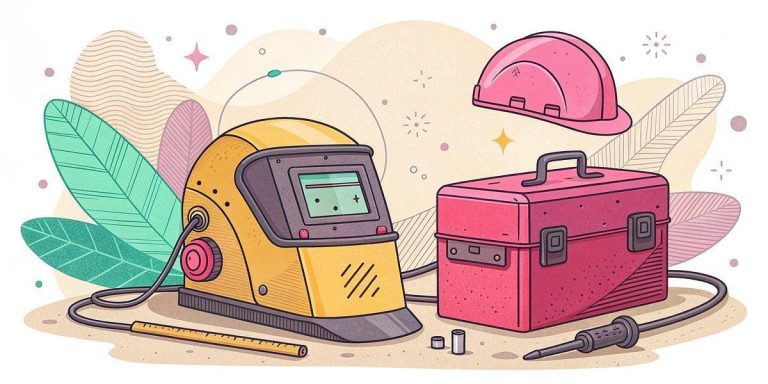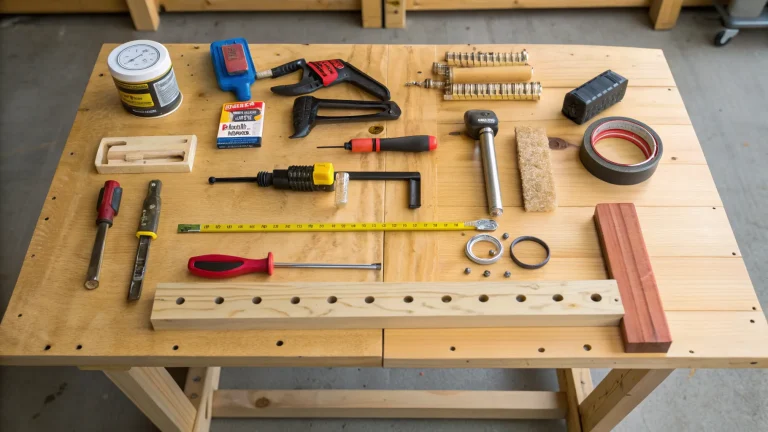When you roll an acetylene cylinder into the shop, it’s easy to focus on things like joint prep, arc control, or whether MIG or TIG is the better choice for your stainless welding job. But tucked inside that cylinder is something many welders overlook—the porous material that keeps acetylene safe and stable. A lot of folks wonder what it actually is and why it’s even necessary.
The answer is simple but critical: that porous filler absorbs acetone, which in turn holds the acetylene gas under pressure without letting it become dangerously unstable. Just like choosing the right filler rods for different metal thicknesses or dialing in the amperage to get a clean bead, knowing what’s inside your gas cylinder directly affects weld quality, safety, and even long-term cost-efficiency.
In this guide, I’ll walk you through exactly what that material is, how it works, and why it matters for every welder who relies on oxy-fuel setups.

Image by enviropacific
Why Acetylene Cylinders Need Porous Material
Acetylene is a fantastic gas for welding and cutting because it burns hot—really hot, up to 6,000°F when mixed with oxygen. But it’s also highly unstable on its own. If you compress pure acetylene too much, it can decompose explosively, even without a spark. That’s where the porous material comes in.
This material fills the cylinder and acts like a sponge, soaking up a stabilizing liquid (usually acetone) that keeps acetylene safe. Without it, you’d be hauling around a ticking time bomb. The porous material ensures the gas stays dissolved and stable, even under pressure, so you can focus on laying down perfect beads or making clean cuts.
Back in my early days, I remember a coworker shaking an acetylene cylinder to “check if it’s full.” Big mistake. That porous material isn’t just there for show—it’s what keeps the gas from sloshing around and becoming unstable. Lesson learned: treat those cylinders with respect.
What Exactly Is the Porous Material?
So, what is this mystery material? In most acetylene cylinders, it’s a lightweight, porous substance like calcium silicate, diatomaceous earth, or a similar compound. Think of it as a honeycomb-like structure packed inside the cylinder. It’s designed to have tons of tiny pores that hold acetone, which in turn dissolves the acetylene gas.
The material is carefully chosen to be:
- Lightweight: So the cylinder isn’t a pain to move.
- Chemically inert: It won’t react with acetylene or acetone.
- Highly porous: To maximize the amount of acetone it can hold.
In the U.S., manufacturers often use a proprietary blend, but the most common is a calcium silicate-based mix. It’s packed tightly to fill the entire cylinder, leaving no empty spaces where free acetylene could pool and cause trouble.
I was setting up a new torch kit and noticed the acetylene cylinder felt oddly heavy. Turns out, it wasn’t just the gas—it was the porous material and acetone combo that gives it that heft. Knowing this helps you understand why these cylinders aren’t like your standard propane tanks.
How the Porous Material Works with Acetylene
Here’s the science made simple: acetylene gas dissolves into the acetone, which is held in place by the porous material. The material’s structure keeps the acetone evenly distributed, so the gas releases smoothly when you open the valve. This setup allows acetylene to be stored at pressures up to 250 psi without going kaboom.
When you’re welding or cutting, the gas flows out of the cylinder, and the porous material ensures a steady, controlled release. If the material gets damaged or contaminated (say, from tipping the cylinder too much), you might notice uneven gas flow, which can mess up your flame or cut.
Pro tip: Always store acetylene cylinders upright. I learned this the hard way when a tipped cylinder caused a sputtering flame during a job. Keeping it vertical lets the porous material do its job properly.
Common Types of Porous Materials in Acetylene Cylinders
Not all acetylene cylinders use the exact same porous material, but they all serve the same purpose. Here’s a quick rundown of the most common types you’ll encounter in the U.S.:
| Material | Characteristics | Common Use |
|---|---|---|
| Calcium Silicate | Lightweight, highly porous, durable | Standard in most modern cylinders |
| Diatomaceous Earth | Natural, porous, cost-effective | Older cylinders, budget models |
| Charcoal-Based Mix | Less common, high absorption | Specialty or industrial cylinders |
Each type is engineered for safety and efficiency, but calcium silicate is the gold standard in most modern cylinders. If you’re picking up a cylinder from a supplier like Airgas or Praxair, it’s likely got calcium silicate inside.
When I was training a newbie welder, he asked why we couldn’t just “fill” the cylinder with more gas to get longer use. I explained that the porous material limits how much acetone (and thus acetylene) the cylinder can hold. Overfilling is a recipe for disaster—stick to the manufacturer’s limits.
Why This Matters for Welders
You might be thinking, “Okay, cool, but why should I care about the porous stuff?” Here’s why it’s a game-changer for anyone with a torch in hand:
- Safety: The porous material prevents explosive decomposition, keeping you and your shop safe.
- Performance: It ensures a consistent gas flow for stable flames, whether you’re cutting steel or brazing copper.
- Cost Efficiency: Properly maintained cylinders last longer, saving you money on refills.
I’ve seen DIYers try to skimp on cylinder maintenance, only to deal with clogged regulators or uneven cuts. Understanding the role of the porous material helps you avoid those headaches and get the most out of your setup.
Safety Considerations for Acetylene Cylinders
Safety is non-negotiable when dealing with acetylene. The porous material is your first line of defense, but you’ve got to handle the cylinder right. Here are some practical tips I’ve picked up over the years:
- Store upright: Keeps the acetone and gas evenly distributed.
- Avoid drops or impacts: A damaged cylinder can compromise the porous material, leading to instability.
- Check for leaks: Use soapy water on valves and fittings—never a flame.
- Don’t exceed 1/7 rule: For continuous use, don’t draw gas faster than 1/7 of the cylinder’s capacity per hour to avoid pulling acetone into the torch.
Once, I was on a job site where a guy ignored the 1/7 rule. His torch started spitting acetone, ruining the cut and wasting gas. A quick chat about the porous material’s role fixed his approach—and his cuts.
How to Check and Maintain Your Acetylene Cylinder
Maintaining your cylinder ensures the porous material keeps doing its job. Here’s a step-by-step guide I use in my shop:
- Inspect the Cylinder: Look for dents, rust, or damage. A compromised shell could affect the internal material.
- Check the Valve: Ensure it’s clean and free of debris. A sticky valve can mess with gas flow.
- Store Properly: Keep cylinders upright, secured, and in a cool, ventilated area.
- Monitor Usage: Stick to the 1/7 rule for continuous draws to protect the porous material and acetone balance.
- Refill with Care: Only use reputable suppliers who follow DOT regulations for refilling.
I once had a cylinder that felt “off” during a long cutting session. Turns out, it was low on acetone because of a sketchy refill. Always double-check your supplier’s credentials to avoid issues.
Common Mistakes and How to Fix Them
Even seasoned welders mess up sometimes. Here are common mistakes related to acetylene cylinders and how to fix them:
- Mistake: Tipping or laying the cylinder flat.
- Fix: Store upright for at least 24 hours before use to let the acetone settle back into the porous material.
- Mistake: Using too high a flow rate.
- Fix: Dial back to the 1/7 rule. For a 100-cubic-foot cylinder, don’t exceed 14 cubic feet per hour.
- Mistake: Ignoring valve maintenance.
- Fix: Clean valves regularly and check for leaks with soapy water.
I remember a student who kept getting a weak flame. He was pulling gas too fast, starving the torch. A quick adjustment to the flow rate, and he was back to clean cuts.
Choosing the Right Acetylene Cylinder for Your Needs
Not all cylinders are created equal. Here’s a quick comparison to help you pick the right one for your shop or job site:
| Cylinder Size | Capacity (Cubic Feet) | Best For | Pros | Cons |
|---|---|---|---|---|
| B (40 cu. ft.) | 40 | DIY, small projects | Portable, affordable | Limited gas for big jobs |
| MC (10 cu. ft.) | 10 | Hobbyists, occasional use | Lightweight, easy to store | Runs out quickly |
| #4 (145 cu. ft.) | 145 | Professional, heavy-duty work | Long-lasting, versatile | Heavy, requires secure storage |
For most DIYers, a B-size cylinder is plenty. Pros on industrial jobs might go for a #4. Always check that the cylinder’s porous material is intact by ensuring smooth gas flow during use.
Practical Tips for Using Acetylene in Welding and Cutting
Here’s how to get the most out of your acetylene setup:
- Set the Right Pressure: Keep regulator pressure between 5-15 psi for most torches. Too high, and you risk pulling acetone.
- Choose the Right Tip: Match your torch tip to the job—smaller for welding, larger for cutting.
- Prep Your Workpiece: Clean metal surfaces to avoid contamination that could affect the flame.
- Monitor Flame Quality: A neutral flame (equal acetylene and oxygen) is ideal for most welding. Adjust if you see soot or a weak flame.
I once spent an hour troubleshooting a wavy cut, only to realize my regulator was set too high. Dialing it back to 10 psi made all the difference. Trust me, small tweaks matter.
Real-World Applications of Acetylene Welding
Acetylene is a workhorse in the welding world. Here are some common uses:
- Oxy-Acetylene Welding: Perfect for thin steel, aluminum, or brazing copper pipes.
- Cutting: Ideal for thick steel plates or demolition work.
- Heat Treating: Used for localized heating in fabrication shops.
On a recent job, I used oxy-acetylene to braze a copper fitting for a plumbing repair. The porous material in the cylinder ensured a steady flame, making the job smooth and clean.
Conclusion
Now you know the deal with the porous material in an acetylene cylinder—it’s the unsung hero that keeps your welding and cutting safe, stable, and effective. Whether you’re a DIYer in your garage, a student learning the trade, or a pro on a job site, understanding this material helps you work smarter.
You’re now equipped to handle acetylene cylinders with confidence, avoid common mistakes, and get the most out of your torch setup.
FAQ
What happens if the porous material in an acetylene cylinder gets damaged?
Damage to the porous material can cause uneven gas flow or acetone leakage, leading to unstable flames. If you suspect damage, stop using the cylinder and have it inspected by a professional supplier.
Can I use an acetylene cylinder without porous material?
No way! The porous material is critical for stabilizing acetylene. Without it, the gas could decompose explosively. Always use cylinders designed with this material.
How do I know if my acetylene cylinder is low on acetone?
If you notice a weak or sputtering flame, or if the cylinder feels unusually light, it might be low on acetone. Get it checked and refilled by a certified supplier.
Why can’t I lay an acetylene cylinder on its side?
Laying it flat can cause acetone to flow into the valve, clogging your torch or causing an unstable flame. Keep it upright to let the porous material do its job.
How long does an acetylene cylinder last?
It depends on the size and your usage rate. A B-size cylinder (40 cu. ft.) might last 4-6 hours of continuous cutting at the right flow rate. Stick to the 1/7 rule to maximize lifespan.



